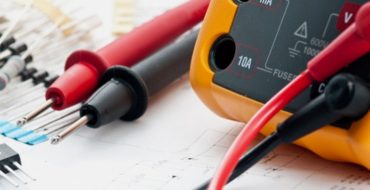With specialist devices available on the market we can measure just about anything. Whether it’s registering the effects of noise in the street, testing electrical current levels, measuring the amount of water flowing through a pipe or the chemical composition of a substance there more than likely exists a product on the market for measuring it. Anyone who buys an instrument from a top brand expects it to be accurate in its measurements. You may think you are getting what you pay for, but how can you be sure your expensive device is accurate?
Start by comparing two instruments that measure the same process, such as callipers measuring a particularly difficult space in a complex structure. If one set of callipers measures 10.49 cm and another set measures 10.51 cm, which one is correct? Or are they both flawed? The same can be said for differences of temperature measured with the most sophisticated thermometers or any other measurement device.
Often, you may only have one go at obtaining a reading of, say, a temperature or noise level. This could be during an experiment, at a concert performance or during an extreme weather event such as a severe windstorm. There may never be a second chance to measure again.
Most professionals realise that any instrument must be calibrated against a recognised national or international standard. The United Kingdom Accreditation Service (UKAS) is the only accreditation authority that is acknowledged by the UK government. It provides inspection, testing, certification and calibration services against recognised standards worldwide. So once a device is calibrated by UKAS, its precision is recognised across the world.
The whole purpose of calibration is to compare your instrument with a recognised standard. In any UKAS procedure, your own instrument is calibrated against another that has at least 10 times the accuracy of yours. If your instrument gives a reading that is completely different from the standard measure, then your device is wrong and needs to be adjusted. The adjustment will ensure that your instrument will give readings within tolerance limits. This means that it may not always exactly match the standard, but comes within an acceptable range of variation.
Instrument manufacturers will specify how often their devices need to be calibrated. This could be monthly, quarterly, semi-annually or annually under normal working circumstances. But a device will need a special calibration before specific projects to ensure accuracy, or if it has been affected by an accident, impact, power overload or extreme weather.
Written by Barry Atkins at www.calibrate.co.uk



